It is true that even the most naturally obtained gemstones have to be exposed to some kind of radiation to make them look super cool. This process is called Irradiation and it is done by bombarding a stream of gamma rays at the crystal structure of the gemstone. It indeed makes the gems radioactive. Let us find out if the irradiated gemstones are anyway harmful to the consumers.
Which stones are irradiated?
Topaz is the most commonly irradiated gemstone. Blue topaz gemstone is one of the rarest gems, and is often manufactured synthetically. Nearly 28 million carats (which is roughly 6000 kilograms) of topaz are irradiated each year, globally. USA leads the source, followed by Germany, Poland and Thailand.
Other gemstones usually found in their irradiated states are yellow, blue, green and pink diamond gemstone. Quartz and amethyst beads are also exposed to radiation at some point of time in their life cycle. Goshenite, golden beryl and Heliodor are popular beryls available exclusively in irradiated states. Black pearls extracted after 1970, are either dyed or are irradiated to look stunning.
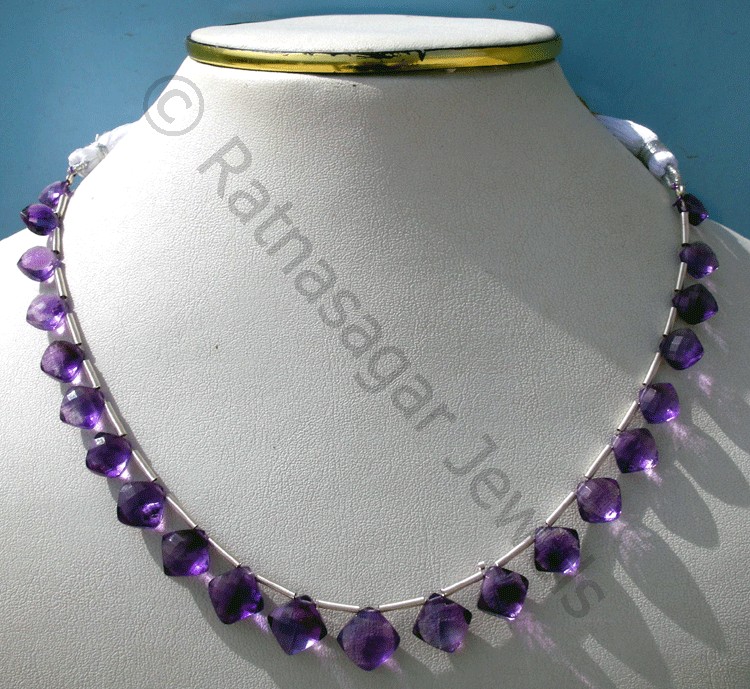
So with so many precious gemstones exposed to radiation, it is obvious that consumers need to know to what extent they are susceptible to any hazard.
Is there any way gemstones are regulated in the market?
Yes. All irradiated gemstones have to be necessarily given a certificate from the regulating agencies in the respective countries. All gem producing and gem treatment nations have strict regulations to monitor the radioactivity levels in the irradiated gemstones, whether natural or artificial.
Here are some precious and semi-precious gemstones that have been ranked among radioactive items.
- Adularia
- Afghanite
- Ajoite
- Amazonite
- Betafite
- Boleite
- Charoite
- Eudialyte
- Francevillite
- Londonite
- Polycrase
- Sugilite
- Thorite
- Titanite
Despite their radioactive state, they are deemed safe for use on a daily basis.
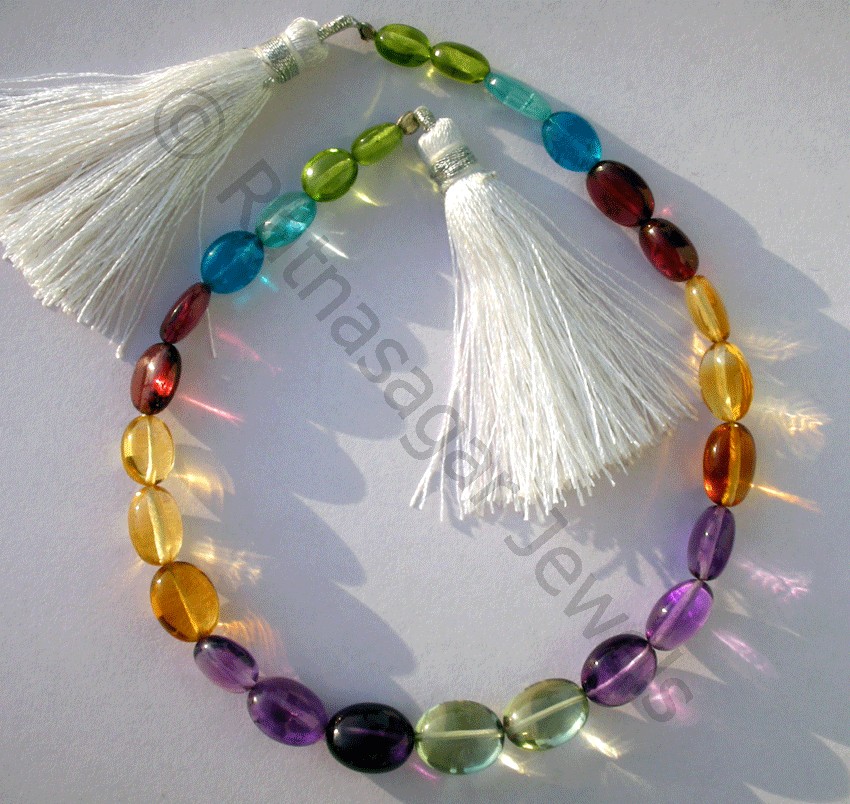
Who testifies for irradiated gemstones in the market?
Irradiation is a very commercial process for manufacturing gemstones. The finished items have to be approved by Federal Trade Commission. Other prominent professional organizations are American Gem Trade Association, The World Jewellery Confederation and International Coloured Gemstone Association.
How to tell ifthe gemstone is irradiated?
A gemstone seller can’t sell irradiated items without necessary certification. One of the most recognised certification comes from United States Nuclear Regulatory Commission. Physically, it is very difficult for even the experts to tell whether the gem has been irradiated naturally, or in a reactor or in an accelerator. The certificate, followed by a testing with survey meter is the only way any lay person can adjudge the gemstones as irradiated or not.
Are they safe for daily wear?
Yes. The irradiated gemstones belong to the family of birthstones, and the customer is required to wear it daily for effective healing and metaphysical benefits. Irradiated gemstones don’t radiate back. The effect of irradiation is exhibited through the change in colour due to the distortion in the crystal structure. The change in colour is permanent and so is the non-radioactive state of the gemstones.
Hence, irradiated gemstones are absolutely hazard-free.
1b43de04-6a88-4f42-802c-d133a4f210fd|1|5.0|27604f05-86ad-47ef-9e05-950bb762570c
Tags
: Blue topaz gemstone . amethyst beads . pink diamond gemstone . semi-precious gemstones . precious gemstones
Going back to the 12th century, we will find the first instances of how diamond cutting became a trade of respectable position in the society. As royal families and noblemen began to showcase their pomp and glory through silk and gemstones, diamond slowly began to raise its head as one of the most precious items of collection in the treasury. The first diamonds were cut in manner that resembles the modern Point Cut. We are not talking about the trend in the year 1970, but in 1287.
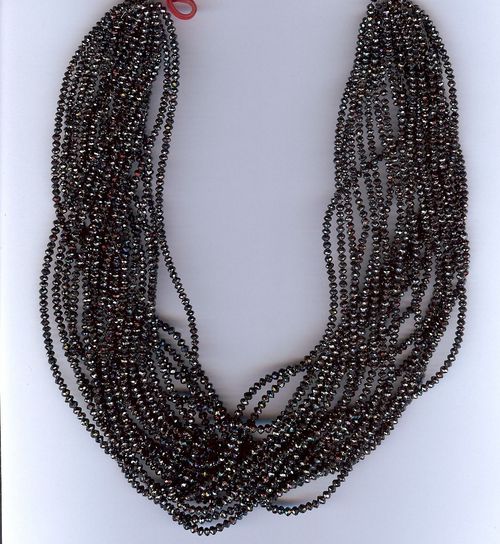
Here are some truly antiquated diamond cuts that still retain their place in modern day gem cutting trends.
Natural Points:
Diamonds that crystallised in octahedral and do-decahedral crystal lattices are left uncut. These are natural crystals and have remained so for millennia. Before America and Australia were discovered and conquered, the only source of diamonds was the Indian sub-continent. A Point Cut diamond is actually a misnomer as there are no tools involved in the machining.
Pyramidal Point Cut:
Grinding became a regular gem cutting and polishing technique, especially after 15th century. Big diamonds were smoothened and polished without taking away their size. Out of multiple girdle profiles, a lapidary artist would choose the one with the largest contour in diamonds. Diamonds have always carried the charm of bestowing magical and healing effects on the person wearing them. Keeping them untouched and natural was no longer a fashionable trend. Hence, slight polishing using Pyramidal Point Cuts made at shallow planes compared to natural points became more popular.
The Burgundian Point Cut:
Burgundian Point Cut is preferred for diamonds with dodecahedral crystals structure. This crystal lattice has many irregularities and requires intensive polishing. The dodecahedron crystal is aligned in a way that the four faces seem as if rising upwards.
Table Cuts:
A remarkable refreshing cutting pattern, diamonds were first cut in Table Cut using diamond dust itself! The first Table Cut diamond was shaped like alphabet “M”. It was probably the first engagement ring ever gifted. Not to forget, before Rose Cut diamond became the symbol of love and romance, Table Cuts were the fashionable items.
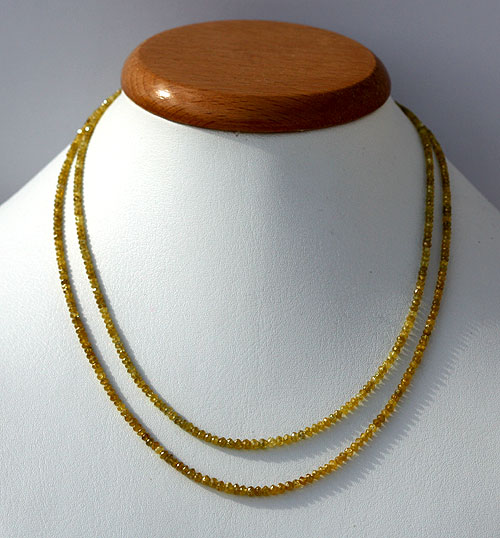
Old Mine Cushion Cuts:
Europeans dug out new sources of diamond gemstone. Amazon and Sahara became the diamond potboilers for traders. The new cutting models for vibrant diamonds beads meant embracing an indigenous gem shaping technique. Old Mine Cushion Cut took birth in the 18th century bearing an uncanny resemblance to what we know as Modern Brilliant Cut. They gave birth to the aristocratic cuts like marquise cut/navette cut.
Old Mine Cushion Cut was produced using bruting machine powered by steam, and later motors. English Round Cuts were borne from the improvements in diamond bruting machines, some of which produced 58 flawless facets in a single diamond gemstone!
Asscher Cut:
Named after the world renowned gem cutters, the Asscher Brothers of Holland (they cut the world’s largest diamond- Cullinan), this is very similar to what we call Square Emeralds bearing large facets, small table and an elongated crown.
df84cfe2-30c3-47fc-a9f5-8b7edc4d817b|0|.0|27604f05-86ad-47ef-9e05-950bb762570c
Tags
: Diamond Beads . Black Diamond Beads . Brown Diamond Beads . Yellow Diamond Beads
Sapphires can be artificially treated in labs in many ways. One of the most prolific technologies to produce these gemstones is lattice diffusion. So let us do a quick review on the lattice diffusion sapphires.
What is lattice diffusion after all?
Lattice diffusion is a commercial gemstone treatment process that involves use of heat and chemical agents to diffuse the ingredients into a gemstone so that it will change colours as per requirement. The best part of using this technology is that gemstones of any colour can be produced. Sapphire gemstone showcasing myriad colours like vibrant red, fiery purple, electrifying blue, silky yellow and pitch dark blacks are produced using diffusion through the crystal structure.
In some cases, sapphire beads are treated with lattice diffusion that can have shallow embeds of colours superficially exhibited on the surface. In others, the colours can penetrate deep into the very core. It all depends on the conditions and impurities already present in the crystal structure that interact with each other randomly during diffusion.
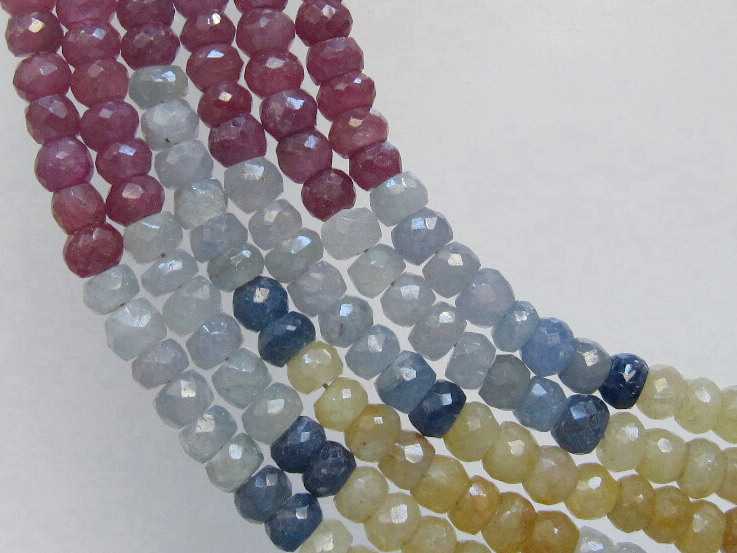
Is lattice diffusion for sapphire legal?
Heat treatment is a legal and accepted technique used on sapphires and rubies. Lattice diffusion however, require regulation from top gem laboratories and trade organizations as far as production and selling are concerned. Lattice diffusion, in no way, adds monetary value to the gemstone. It only improves the brilliance and clarity with a more consistent appearance.
It is legal, and is very different from the process of dyeing and stabilizing. The molecules added to the crystal structure can’t be detected even under the most powerful microscope. Hence, a gemstone dealer has to necessarily produce a certificate labelling the stone with lattice diffusion.
Types of diffusion methods:
Apart from lattice diffusion, certain gemstones are also treated using Surface Diffusion and Pipe or Channel Diffusion.
Surface diffusion:
It is the addition of natural colouring elements like iron, copper, titanium and chromium to the shallow surface of a gemstone during heat treatment.
- It is sued largely on corundum and silica-based gemstones after cutting is done.
- The colour penetration is usually less than 30%.
- It is done at melting point of the element so that it diffuses evenly into the crystal up to a depth of 1 millimetre.
Surface diffusion is done for blue sapphire beads and rubies. Colour obtained on a gemstone using the surface diffusion could be lost due to re-polishing, scratching or resetting.
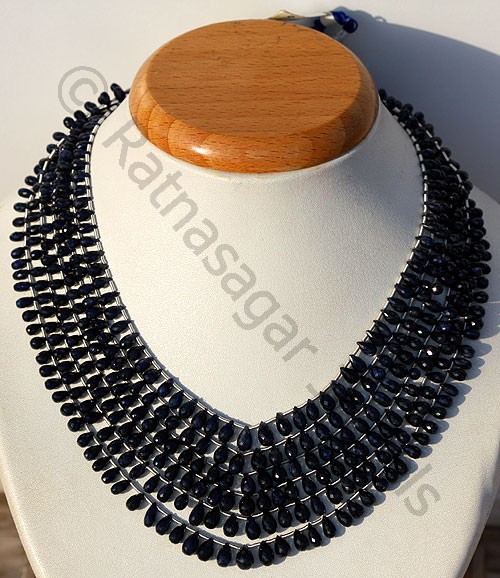
Channel Diffusion:
Also called as pipe diffusion, this heat treatment technique is applicable to feldspar and Labradorite gemstones. It is done using copper as the diffusing element. The diffusion occurs along the channels and can be easily detected under microscope.
Identification of surface and channel diffusion sapphires is done by studying the bands and zones running parallel to the crystal facet.
Unlike the gemstones that are heat treated using chemical dyes and fillers, those produced using lattice diffusion are relatively sturdy and long lasting. They cost a little less than other varieties, but exhibit the same brilliance and clarity. Moreover, they are easier to machine and cut.
f64f298b-7406-4e7c-86b9-0e4056c32e6b|0|.0|27604f05-86ad-47ef-9e05-950bb762570c
Tags
: Blue sapphire beads . Sapphire gemstone beads . AAA Sapphire Beads . Sapphire Round Beads . Sapphire Stone
Tourmaline gemstones and Paraiba are now commercially accepted as synonymous with each other. Considered as an electrifying item for jewellery and fashion, tourmalines bearing this characteristic shade owe their origin to north-eastern parts of Brazil. Much later, the sizzling varieties in effervescent green-blue were mined from Mozambique and Nigeria. If you are planning to buy a Paraiba tourmaline, there are chances that you might get confused between the ones coming from Brazil and those mined from Africa.
How are they different? Does it really count if they are from different sources? How to tell the difference between the two?
In terms of physical differentiation, it is very hard to find the variation between the Paraiba tourmalines from Africa and Brazil. Even under the microscope, they are hard to be differentiated.
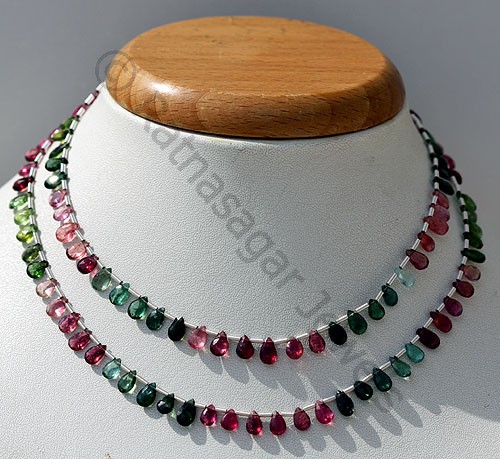
So, how to differentiate? The only way gem labs can find the difference is by using quantitative chemical testing. Origin-wise, gem collectors rank Brazilian tourmalines higher than the ones mined from Africa. The African tourmalines have a reputation similar to what Burmese rubies enjoy in the gem lines.
History of Paraiba:
One of the recently discovered naturally-occurring gemstones, Paraiba tourmalines have a history dating back to 1980s, when Heitor Dimas Barbosa and his assistants dug out pegmatite deposits in the hilly areas of Paraiba in Brazil.
Why Paraiba gemstones are so popular?
The shady electrifying blue shade in the Paraiba tourmalines matches the beauty of blue sapphires. The blue colour appears due to the presence of copper oxides and hydroxides. Brazilian stones are darker in colour compared to their African counterparts by virtue of higher copper ions in the crystal structure.
Paraiba tourmalines exhibit a variety of colours ranging from sky blue to aquamarine to psychedelic blue. Highest variation in colour shades is observed in Mozambique Paraiba tourmalines.
World’s most famous Paraiba:
The Guinness World Records rank stunning Ethereal Carolna Divine Paraiba as the world’s largest, flawlessly cut naturally occurring Paraiba tourmaline in the world. It weighs 191.87 carats and is enlisted in the same bracket as Logan Sapphire, Hope Diamond, The Golden Jubilee and Alan Caplan Ruby.
The Ethereal Carolina Divine Paraiba is an oval shaped tourmaline featuring Brilliant Cut, and is four times heavier than the second largest tourmaline ever mined. The stone now graces as a part in the necklace called Paraiba Star of Ocean. It entered the ranks in 2009 when the stone featured in the necklace designed by Canadian jewellery house- Kaufmann de Suisse.
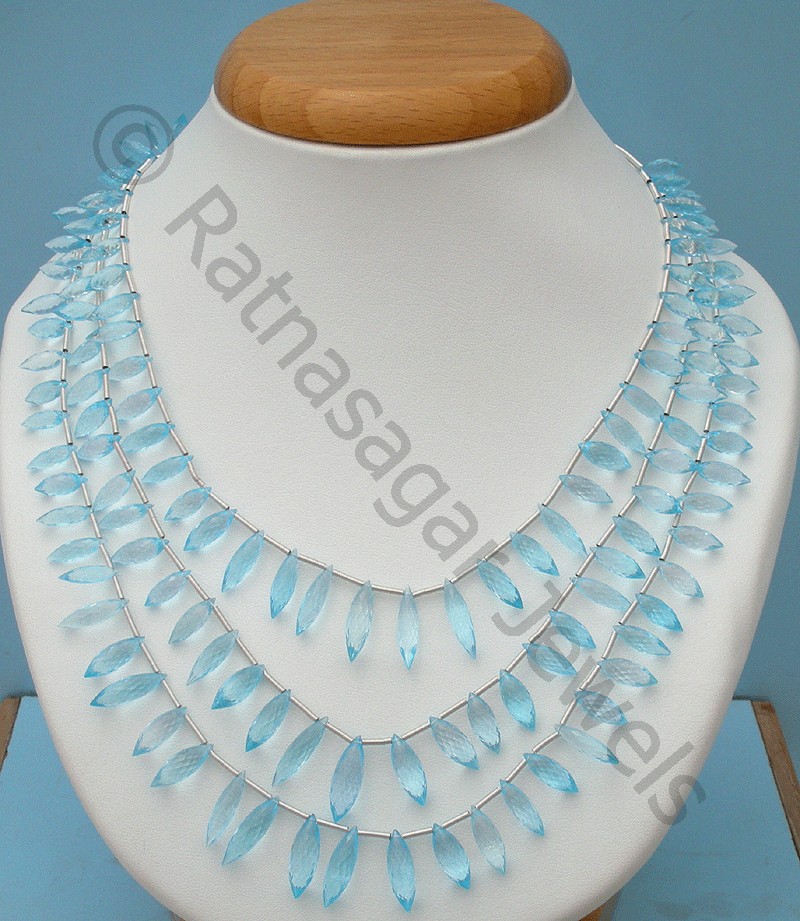
This tourmaline exhibits a radiating neon blue-green colour very distinct from the traditionally mined stones. It is best described as the blue of the tropical ocean. Even the necklace it is fit into has been inspired from the aqua flora and fauna. A compliment to the marine animals like turtles, shells crabs, star fish, rays and sea horses, Paraiba tourmaline is flanked by the likes of canary yellow diamonds, blue, orange sapphires, ruby, garnet, emeralds, Tsavorite and blue topaz gemstones. The 191.87 carat Carolina tourmaline easily exceeds the size of all other gemstones.
e5252dba-f89e-40ee-8303-51ca1f5a63fa|0|.0|27604f05-86ad-47ef-9e05-950bb762570c
Tags
: Tourmaline gemstones . yellow diamonds . ruby gemstones . garnet beads . blue topaz gemstone . Tsavorite gemstones
12. July 2016 23:23 /
Manoj
/
Comments
(0)
Rubies are one of the rare and precious forms of gemstones, distinguished from the likes of emeralds and diamonds with its garish scarlet red colour. Meanwhile, market boasts of variety of ruby gemstone beads with primary hues ranging from yellow to blue to even purples! But nothing like the pale rose pink rubies that have ruled the hearts of Dukes and Emperors for centuries.
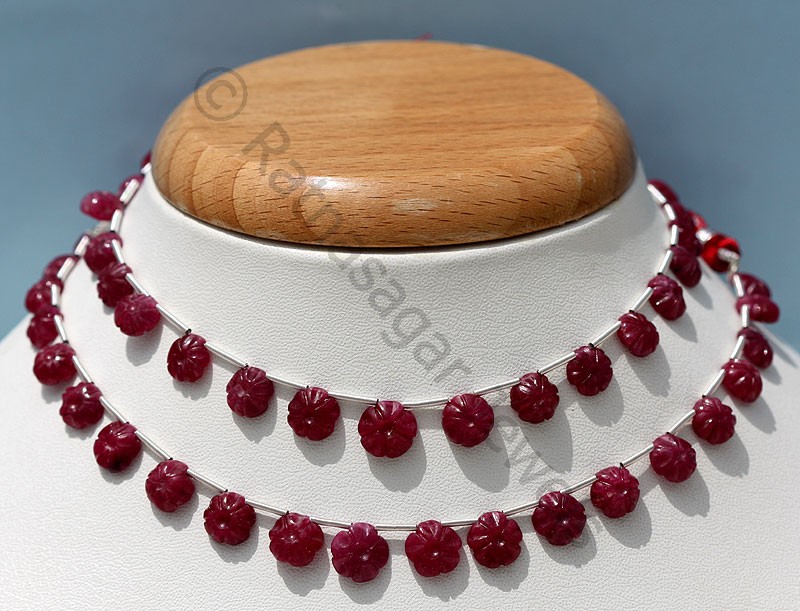
How to tell if the ruby is real or fake? Here is what gem experts do to distinctly identify real rubies from the cheap imposters.
Primary Identification using Colour Consistency test:
What you see is what you get. Ruby is a blood red gemstone belonging to the family of corundum. The colour is present due to the chromium ions that inundate the crystal lattice largely containing aluminium oxide. If the colour is consistent with fine rutile impregnated in the crystal, it means the ruby is fine and untreated. If you miss out on the rutile, it means that the stone has been treated in heat to look finer and give a more consistent colour. A shade of imperfection is what makes rubies so attractive.
Test to find specific gravity:
Purest ruby corundum will bear a specific gravity of 3.98 with tolerance of 0.5% depending on the source of the stone. A special solution called “Clerici” is used to check the specific gravity of a ruby gem. Since the specific gravity of the dense fluid is 4.0, the rubies are supposed to float and displace the same weight of the fluid.
Note: In market, rubies are available in the range between 3.95 and 4.05 specific gravity.
Test for Refractive Index:
In terms of opacity, rubies can show transparency as well as translucency. The refractive index of a pure ruby is anywhere between 1.763 and 1.768 with dispersion measured under spectrometer coming at 0.018. Cheaper version of rubies and other gemstones have a much lower refractive index, often counted between 1.66 and 1.70.
Double Refraction Test:
Now we are taking serious science. Ruby gemstones do not boast of any particular line of cleavage. The fractures occur in conchoids or splintery manner. The hexagonal crystal structure of ruby and the internal fracture plane splits a single beam of light into two, leading to a phenomenon called Double Refraction. When observed under a polariscope, ruby exhibit birefringence or dispersion of 0.08.
Fluorescence Test:
Rubies are exposed to florescent light and the refraction is checked with Chelsea Colour filter. Luminescence of rubies when florescent light is passed through them bears crimson or orange light. No other stone apart from ruby will give a red when exposed to florescent light. This is a key separation test between rubies and garnets.
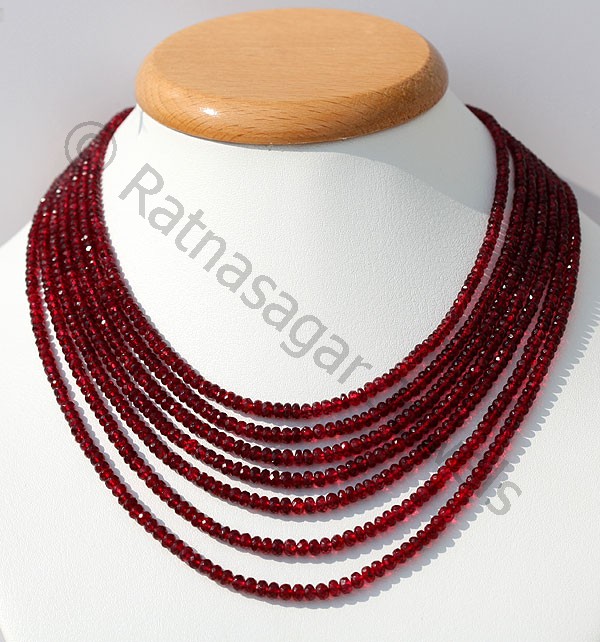
Popularity of synthetic rubies:
Use of synthetic rubies is not a taboo! They are imitation stones made by burning scarlet wool under the base. They were largely used to manufacture Ruby Lasers in the 60s. Red spinel gemstone beads, red tourmaline, Rubellite and Balas ruby are some of the names you should stay away as a buyer.
Save
d171c7d7-4a63-4365-ade0-5d7b75979c37|0|.0|27604f05-86ad-47ef-9e05-950bb762570c
Tags
: ruby gemstone beads . Ruby gemstones . Ruby beads . Red tourmaline gemstones . Red spinel gemstone
Searching for real opals? You should be familiar with the characteristic optical features that a natural, untreated opal exhibits. To check the authenticity of the opal, get it under a Turbidity meter. All opals exhibit an optical phenomenon derived from their own primary name- opalescence. It is defined as the milky and turbid appearance in opal.
Opals: The Magic of Milky White
Often referred to as the stone from the Cosmos, opal is a Sanskrit word- Uppal meaning “precious milky stone”. It is a gemstone largely constituted of hydrated silicon di oxide. It is an amorphous stone and is extracted largely from the Southern Hemisphere. In fact, it is actually the National Gemstone of Australia.
The various forms of opal are:
1. Precious Opal
2. Fire Opal
3. Potch Opal
4. Girasol Opal
5. pink Opal Gemstone, also called Peruvian opal
Opals actually exhibit both Play of Colour as well as Opalescence.
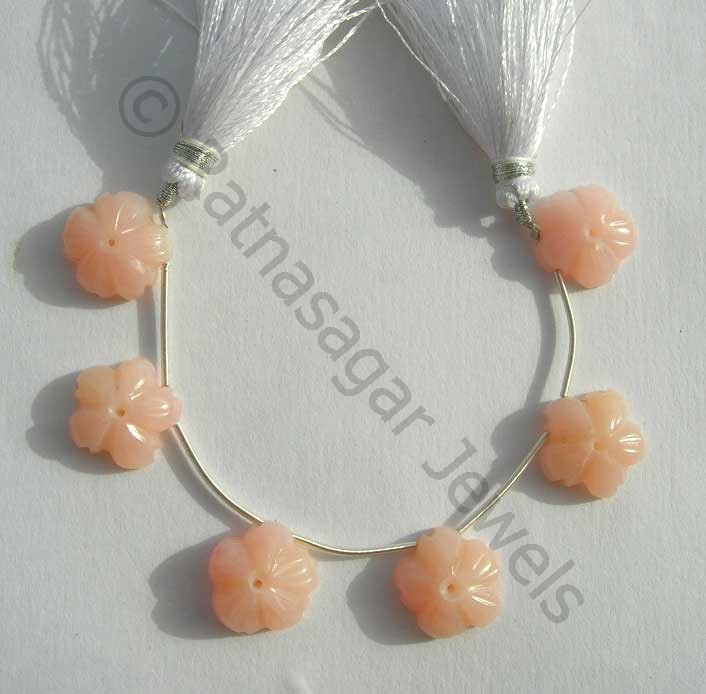
How opalescence occurs in the gemstone?
Opalescence is confined largely to the blue spectrum during reflection of short wavelength light rays. It is because of this phenomenon that a gemstone appears turbid with a shiny blue surface. Another reason, it appears blue is due to the significantly high traces of water, which could be as much as 21% of the silica crystal volume.
The spaces where water is present hinder the passage of light, making the gemstone look milky. Through these spaces, no diffraction occurs. The internal scattering around the water traces render the opal its characteristic opalescence.
Opals that made History:
Opalescence can occur along with white, colourless, yellow, red, grey, black and fiery shades of red and blue as well. Diffraction causes flashes of Play of Colour. Intensity of opalescence decides the brilliance and clarity of the gemstone, and hence commands the price. The red opal beads as well as blue opal beads are extensively used in jewellery.
Opals in flat cabochon glorify the opalescence in the most beautiful way. The most popular opal gemstones in the history of mankind are:
Sun God Opal:
A 16th century gemstone, carved from mines in Mexico. It is a 35 carat Aztec-era stone with a singular quality. It is a dazzling item showcasing opalescence and play of colours brilliantly.
Dark Jubilee Opal:
A thrilling example of Australian opal deposits, this 314.8 carat gemstone was mined from Coober Pedy.
The Olympic Australis:
Named after the Olympic Games in Melbourne, this is one of the purest mega-carat gemstone ever mined. Valued at $2,500,000 (Australian Dollars), it is a massive 17,000 carat opal exhibited all over the world.
The Butterfly Stone:
Also named as the Red Admiral, it is a unique gemstone exhibiting opalescence at only certain angles. It resembles the red English butterflies and hence the name.
Empress of Australia:
Rightly named, this gemstone was mined in 1915. It is referred to as ‘Kaleidoscope Queen’ and ‘Tartan Queen’. It weighed 500 carats in its initial days of glory.
Other prominent opals owned by museums and individual collectors are Pride of Australia, The Flame Queen, The Black Prince and Halley’s Comet.
Save
62d8ccee-3015-4efa-be75-da2178765339|0|.0|27604f05-86ad-47ef-9e05-950bb762570c
Tags
: Blue Opal Gemstone . blue opal beads . Red opal beads
Aquamarine is blue green gemstone cut in variety of shapes. Cabochon, Fancy and Emerald step-cut are popular among the gem cutters, who cater to the demand of the art galleries and collectors from across the world. But are Aquamarines worth the attention they get in the gem market?
Here is how you can find and authenticate a genuine Aquamarine and stay clear from disputes.
1. Heat treatment for colour enhancement:
Aquamarine gemstones are heat treated to enhance the colours and impress the consistency. Many untreated aquamarines are also available in the market, but they exhibit translucency and opacity to a certain degree. High quality Aquamarine gemstones are identified by their lighter shades, which means they may not have been heat treated. The stones heat treated to 450 degrees centigrade are often found to have darker shades, but may not be a high quality beryl.
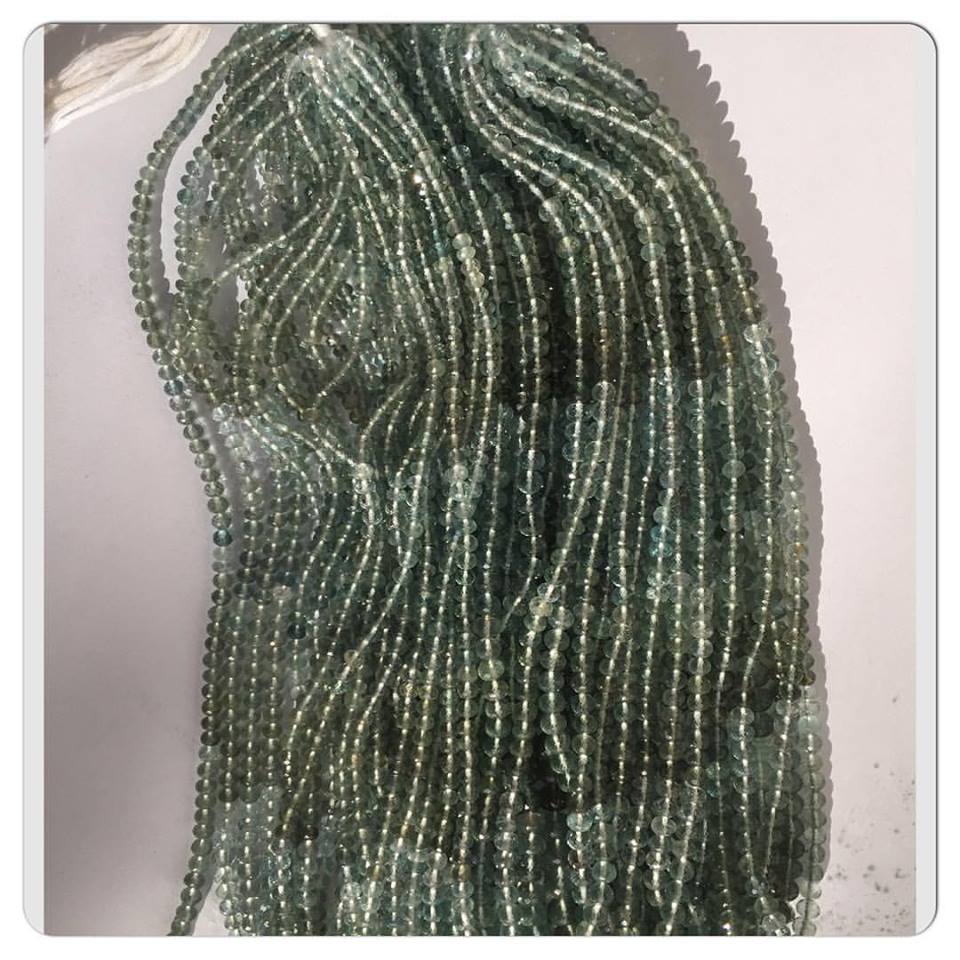
Note: Aquamarines heated beyond a specific high temperature lead to irreversible discolouration. Thus the spectrum of authenticity is very small as far as gems heat treatment range is concerned.
2. Is an aquamarine only blue in colour?
Aquamarines fall in the category of clear blue and clear green beryl family. The coloured Aquamarine and Chrysoberyl resemble very closely to each other. The colourless variety is called Goshenite, but is now tagged as colourless beryl.
3. Specific Gravity is higher than other stones:
Aquamarines are heavier than other gems. The stones extracted from Latin American mines have a specific gravity ranging between 2.66 and 2.80. The ones mined from Asia and African mines have higher density due to greater presence of alkali ions.
Gems are immersed in liquids with higher density and the results are noted. Whether the gemstone floats or sinks into the liquid decides the authenticity of Aquamarine.
4. Refractive indices:
Aquamarines beads have a refractive index ranging between 1.572 and 1.590. It exhibits a brilliant and unhindered impression when exposed to white light.The originality of the stone is established by placing it under Refractometer. Here are different optical phenomena observed in the real Aquamarine.
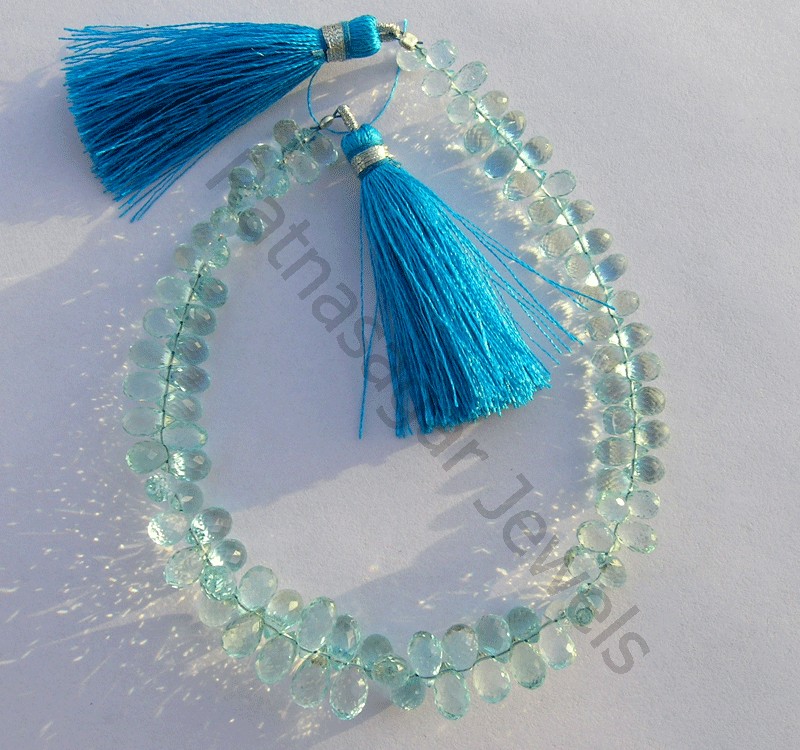
Aquamarines can exhibit colour dichroism owing to the presence of more than one colouring ions like chromium, iron and copper. The strength of the colour depends on the percentage of the ions. Birefringence can range between 0.005 and 0.008, which represents the saturation of the colour.
Conchoidal fracture in Aquamarine can cause rainbow effect. It is caused due to diffraction combined with interference.
Aquamarine exhibits chatoyancy due to the presence of rutile in the crystal structure. Rutile is composed of titanium dioxide and can be found in traces in gemstone families like quartz, beryl, chrysoberyl, charoite, tourmaline, feldspar, Labradorite, moonstone, apatite and tourmaline.
Asterism in Aquamarines is a rare phenomenon, but not an exception. Polished, untreated Aquamarines from Brazil show 4-ray star patterns sparingly.
There are different closely linked beryl gems that can be confused with Aquamarine. Study the colour and the crystal lattice under a microscope for further verification.
8310242e-1d13-4157-b2fb-7e42ffdf4597|1|5.0|27604f05-86ad-47ef-9e05-950bb762570c
Tags
: Aquamarines beads . Aquamarine gemstones . Aquamarine gemstone beads . AAA Aquamarine gemstones
If you were born under the sun sign of Cancer, you can choose from plenty of gemstones for you. Cancer people are caring and gentle, and the birthstones identified for this sun sign balances the characteristics traits. These birthstones serve as a lucky charm, and it can help in keeping the emotional serenity under control. You must be aware of the different gemstones for cancer being born between 21st June and 22nd July. Once you have a list, making a choice, as per the suitability will be easier for you.
List Of Cancer Birthstones:
As mentioned, there are lots of lucky birthstones for cancer. In this article, you can take a look at four top stones that you might try.
1. Emerald:
It is a traditional birthstone of Cancer. Apart from that, it is also the birthstone of the people born in June. In fact, the green variety is the lucky color for all Cancerians. It can help in bringing balance in life. Emerald Gemstone Beads are believed to carry the power of emotional wellbeing for the individual wearer. In addition to that, if you wear this stone, it can bring in clairvoyance, a talent which is unthinkable of many men and women of this sun sign.
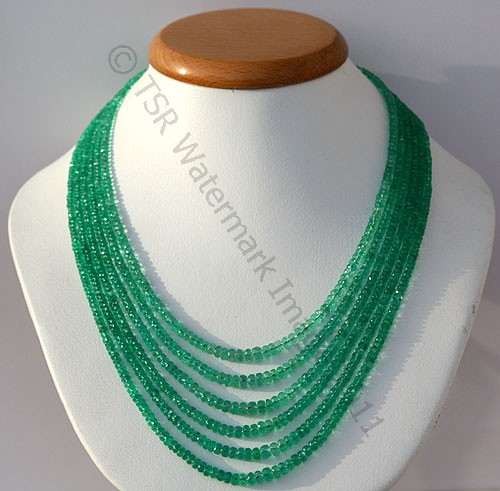
2. Pearl:
This is the ideal birthstone in terms of both western and Vedic astrology. Unlike other gemstones, this cancer stone is not a geological effect, but marine activities that take place inside the shells. The shiny and round Pearl Gemstone Beads are lucky, and is said to strengthen relationships and marriages. In addition to that, it can even keep your children safe from any kinds of threats or dangers.
3. Moonstone:
This is again a well known birthstone of Cancer in terms of astrology. It is the ideal birthstone for the month of June. The opalescent variety is the most suitable stone for Cancer, and you will benefit from it by wearing it. In fact, there are several ancient beliefs pertaining to Moonstone Beads, where the stone was solidified by the rays of the moon. Moon is the ruling planet of the cancer, and hence moonstone is the planetary stone. It can cure anxiety and even stimulate clairvoyance. Often, it is also said to act as the stone of security.
4. Ruby:
Ruby is the traditional stone associated with this sun sign. It can focus on the energies of the planet and bring in positive vibes. Apart from that, the stone can bring vitality, strength, courage and confidence. It can be used to enhance energy and bring in success. Happiness and joy are also associated with this stone. Ruby Gemstone Beads are also known to have several healing properties. Therefore, it is effective for healing blood and infection while increasing the positive thoughts and patterns in the wearer.

Now that you know the 4 most important birthstones for Cancer, you can definitely try out the one that suits you the best. In this context, you can also talk to an astrologer and get the necessary recommendations on the same.
6bdf0483-0086-4409-a783-0dd807878d92|1|5.0|27604f05-86ad-47ef-9e05-950bb762570c
Tags
: Emerald Gemstone Beads . Pearl Gemstone Beads . Moonstone Beads . Ruby Gemstone Beads . Emerald Gemstones . AAA Gemstone Beads
6. July 2016 23:05 /
Manoj
/
Comments
(0)
People, who are born between February 19 to March 20th have the zodiac sign Pisces. As different zodiac signs have lucky gemstones, in a similar way, the lucky stone for this sign is amethyst. Being a birthstone for Pisces, it symbolizes strength and good luck. However, apart from amethyst, several other gemstones are said to be lucky for this sun sign. Some of the precious gemstones that are compatible with these stars are opal and sapphire. Different stones are associated with different powers for ruling the moon sign. It is often said that the combination of the properties in the stones along with the characteristics of the sign will work to bring different meanings.
A List Of The Best Stones For Pisces
Below is a list of some of the best stones ideal for Pisces.
1. Amethyst:
The ideal gemstone or the birthstone will bring power and strength to the Pisces. It will even bring in loving thoughts and bring bravery to the open hearts. In addition to that, it often becomes the ideal source of creativity in expressing different types of feelings.
2. Blue sapphire:
The Blue Sapphire Beads helps in improving the spiritual abilities of a person, and hence it is even considered as the magical stone for Pisces. It can generate some superpowers for its wearers.
3. Opal:
This is yet another lucky stone for Pisces, which is known to bring harmony and happiness in the lives of different individuals. Opal Beads play a great role in strengthening the intuition of the wearer. It even has the potential to restore joy among the wearer.
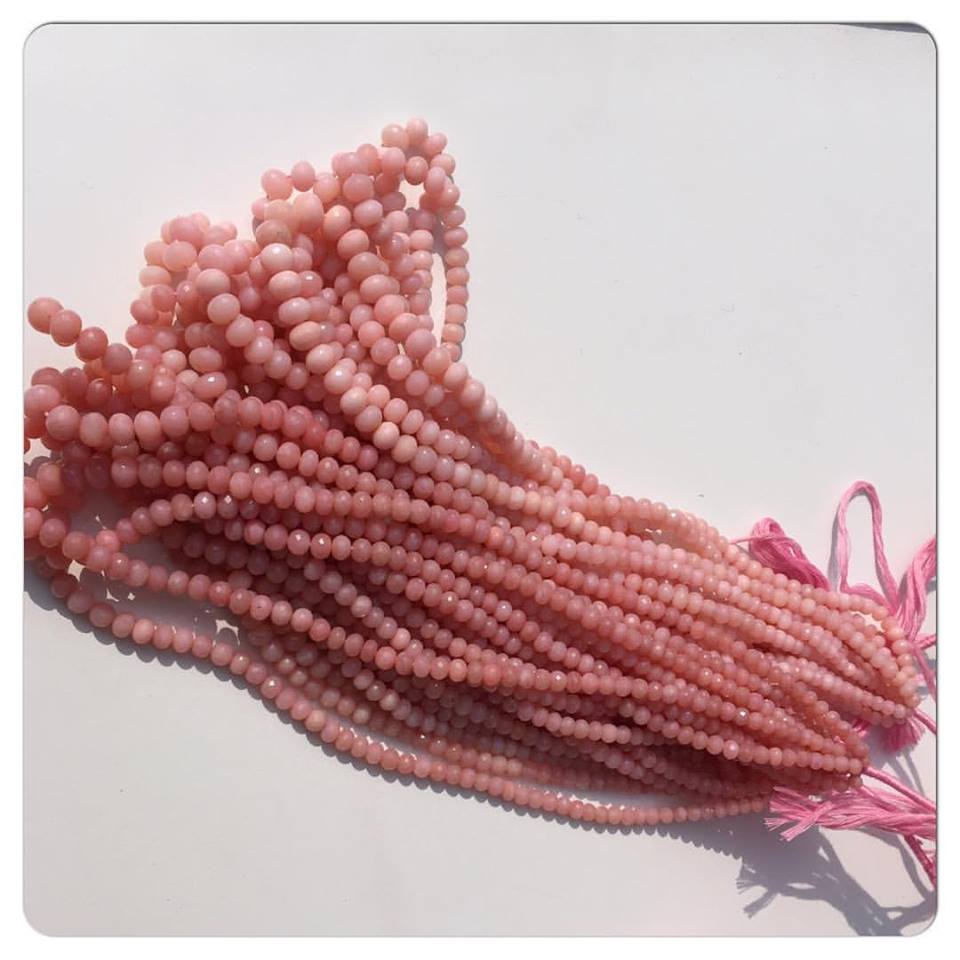
4. Fluorite:
Also known as the stone of the enlightenment, it can help in realizing truth for the Pisces. It can help the wearer describe lots of things which others are unable to understand.
5. Sugilite:
This is again a great gemstone for Pisces because it helps in improving confidence level to a great extent. It can even help in self possessions from day dreaming. Pisces can survive in threatening conditions with this stone because it helps in giving courage for overcoming the obstacles.
6. Agate:
The gemstone has the ability to convert negative energy into positive vibes among the wearer. It can even help in increasing confidence and overcome the unwanted temptations.
7. Garnet:
The Garnet Beads are ideal for Pisces as it helps in generating immense success in life. It is also the ideal stone associated with good luck for the Pisces. The power of this stone lies in generating physical energy by means of which the wearer can achieve goals and objectives in life.
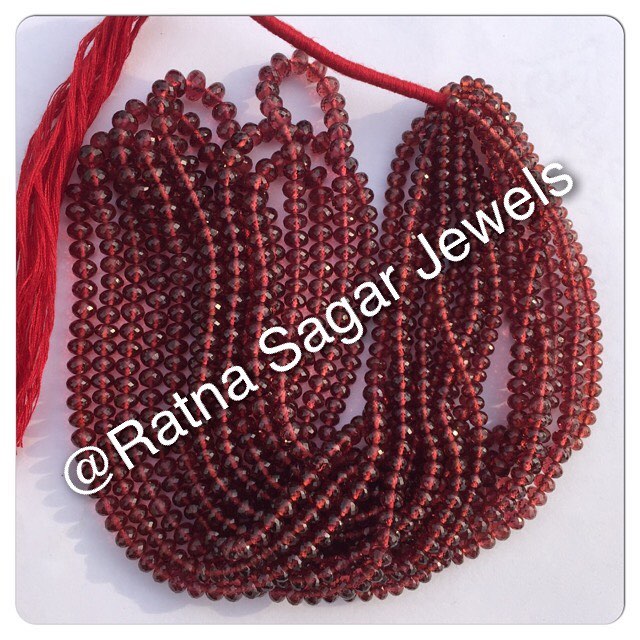
8. Jade:
It provides peace and tranquility to the wearer. The power of metaphysical energy is radiated by the Jade Gemstone Beads, and this in turn reinforces the empathy in the Pisces. Couples can also expect to stay in harmony by wearing this stone.
9. Diamond:
The precious stone can bring in strong sensitivity to the Pisces wearer. The gemstone radiates the strength of power, which in turn can create a great impact on the emotional level of the wearer.
Try out any of these stones if you belong to Pisces.
e6dfc19d-2994-47c3-a41f-ce8002861ce4|2|4.0|27604f05-86ad-47ef-9e05-950bb762570c
Tags
: Blue Sapphire Beads . Opal Beads . Garnet Beads . Jade Gemstone Beads . precious stones
Gemstones are not only worn for astrological purposes, but many are passionate about wearing them as jewelries. However, despite loving them, you might not be able to buy them because of their costs. It is true that most gemstones are so expensive that it is often out of your reach to buy them. At the same time, you will also be happy to know that many gemstones are affordable and they are classified under the category of semi-precious gemstones. It goes without saying that precious gems like Ruby, Diamond, sapphire and emerald are expensive. Some semi-precious stones are rarely available, and they are also expensive. Apart from that, the other semi-precious gems are affordable.
Most Affordable & Best Semi-Precious Stones:
Below is a list of some of the most affordable semi-precious stones that you can add to your bucket.

1. Tiger’s eye:
Most people are familiar with this stone because these are very common and easily available. Brown in color, it comprises of a silky luster, and it is affordable. Yellow and black are the most common varieties of this stone, and it is available at only few dollars per carat. However, some of the rarest varieties can be expensive.
2. Rose quartz:
Many types of Rose quartz are currently available and they are affordable, as well. Rose quartz is highly popular, available in pale pinkish hue. It can look wonderful in any jewelry. It is even popular for healing and therapies.
3. Amethyst:
A type of quartz, this stone comes in a purple color. The color can range from lavender to deep violet. Amethyst Gemstone Beads were once expensive because it was rare. However, now it is commonly available and is cheap.

4. Agate:
You can expect to find many types of agate in the market. These include blue band agate, fire agate, blue lace agate, moss agate, pink agate and others. Some of these are rarely available and hence expensive than the others. However, most of these are affordable because of their easy availability.
5. Citrine:
The gemstone is usually amethyst or quartz. When it acquires heat treatment, it turns into yellowish brown color and is known as citrine. Since it is easy to manufacture Citrine Gemstone Beads in lab, they are highly affordable and popular.
6. Jasper:
This stone can come in variation of colors, and red is the most common type. It appears red because of the iron inclusions. Most of these stones sell out at a very cheap rate, and it can be highly suitable when used as a pendant. Its soft nature makes it unsuitable to be used in rings.
7. Onyx:
The easily available stone is popular and affordable. True black onyx often sells at few dollars per carat. Some stones might contain bands of white though in most cases, it is pure black. Black onyx is used for its mystic powers, and it is used for many other reasons.
8. Turquoise:
The mixture of both copper and aluminum makes it look appealing. The Turquoise gemstone is often treated for color enhancement, and treatment reduces the prices of the stone.
306c3c7a-26ef-4765-a416-0bf23bbb405e|1|4.0|27604f05-86ad-47ef-9e05-950bb762570c
Tags
: Semi-precious stones . Rose quartz gemstones . Amethyst Gemstone Beads . Citrine Gemstone Beads . Turquoise gemstones